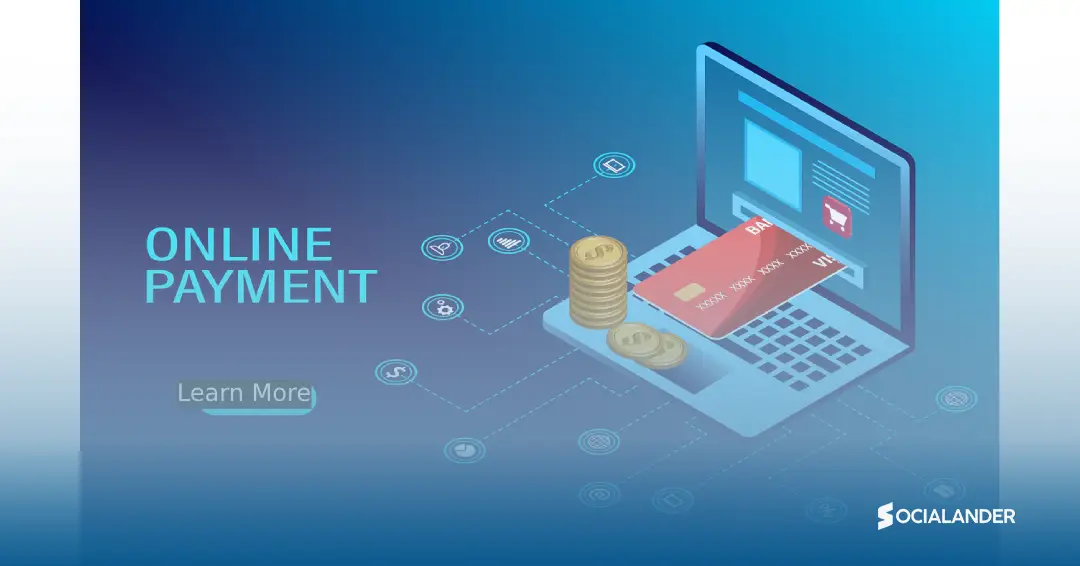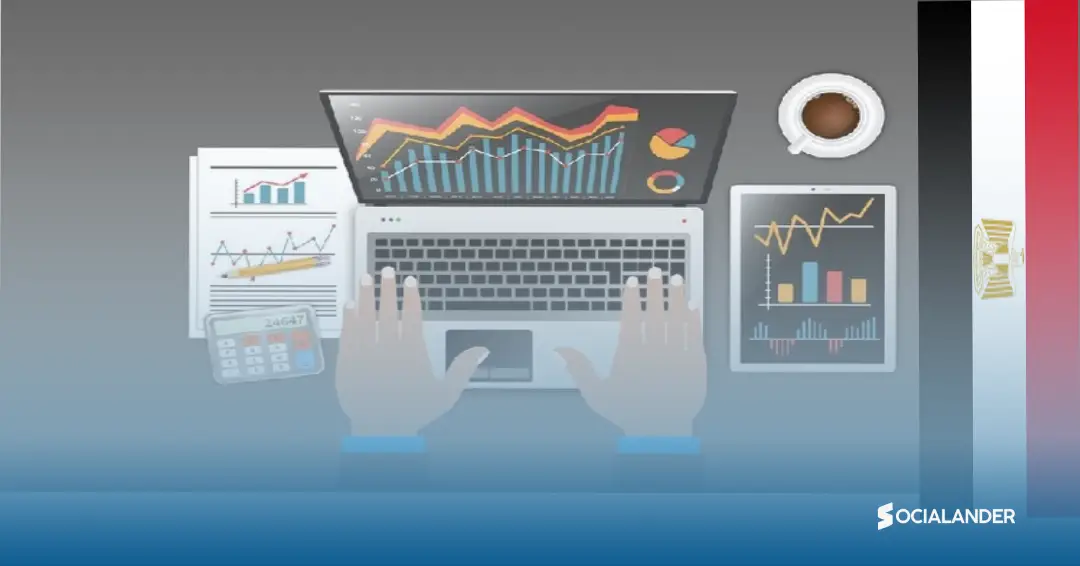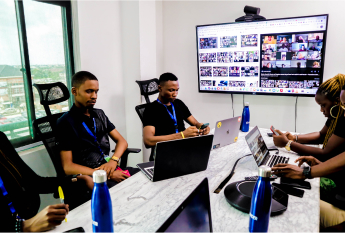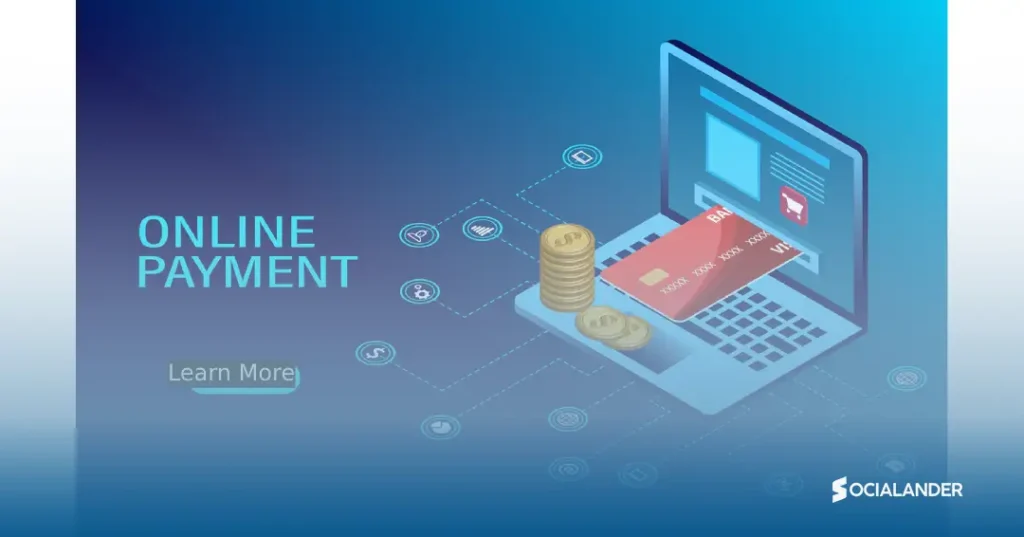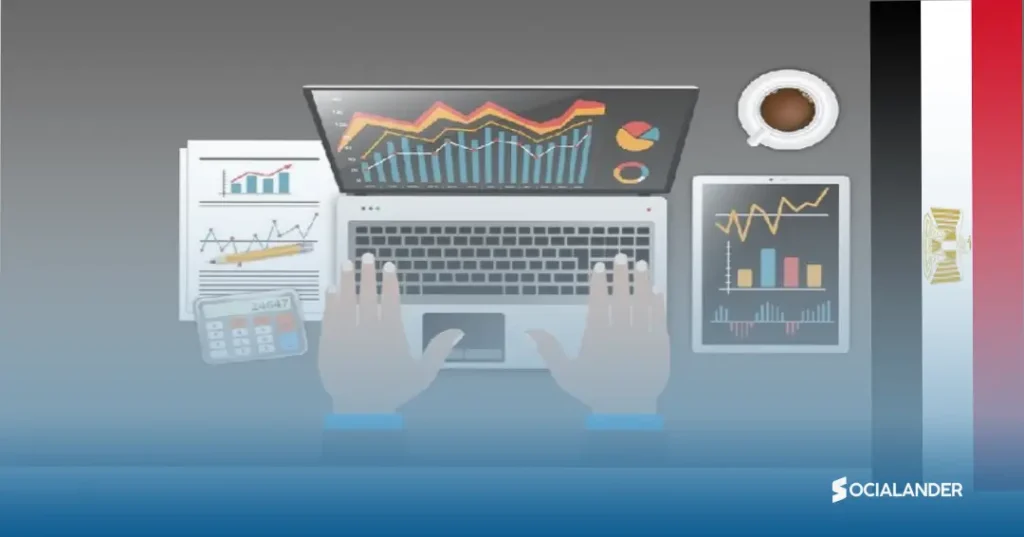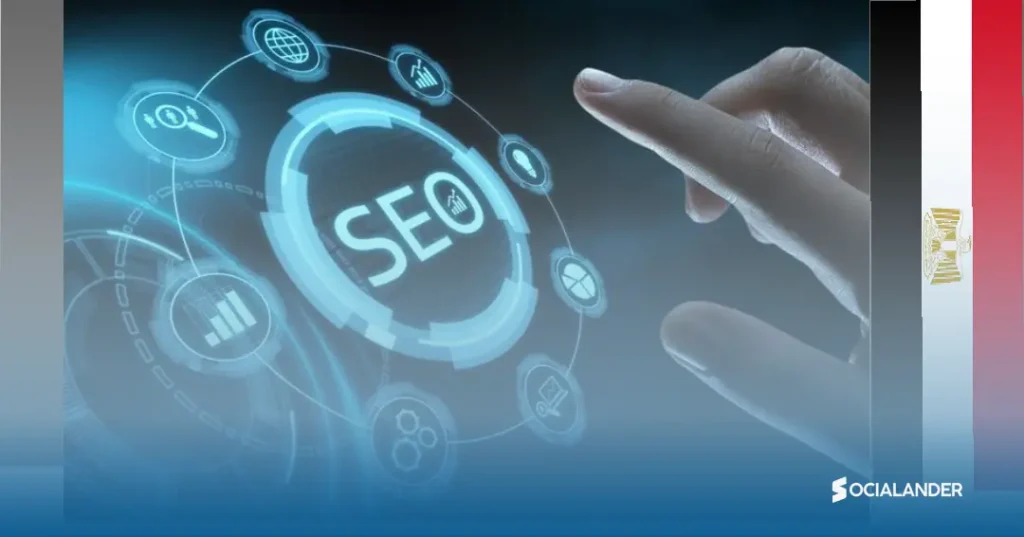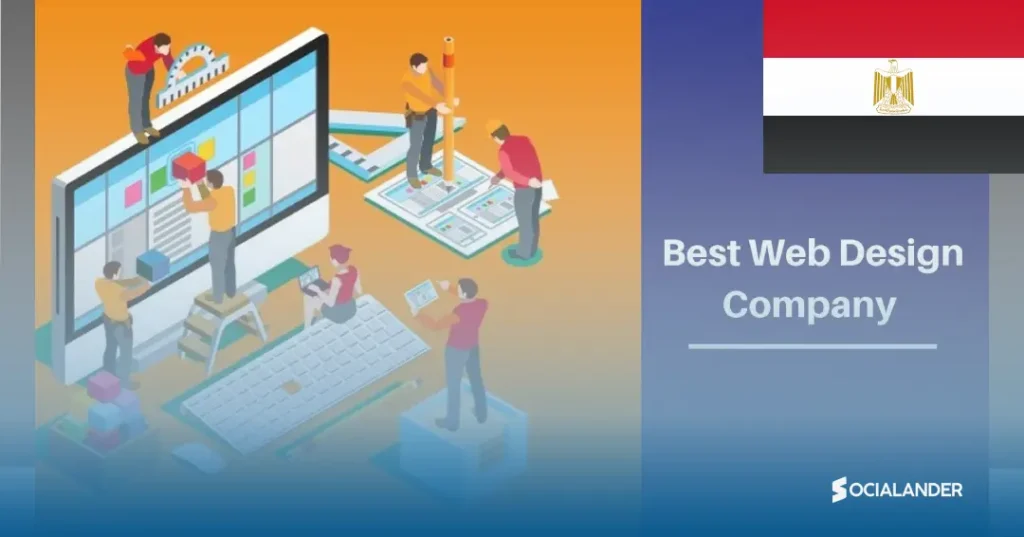How To Use Linkedin Ads For Business Growth In 2021
What are Linkedin Ads?
LinkedIn is a social network specifically designed for career and business professionals to connect. LinkedIn is ideal for building connections for freelance work, a customer base, potential partners, or simply to keep your job prospects open. LinkedIn is the world’s largest professional networking website. A significance Linkedin has over other social media platforms is the ability to connect individuals to job/internship opportunities, build connections in your industry, and stay in touch with past and present colleagues anywhere in the world.
However, with LinkedIn powering over 760 million users and finding opportunities that are tailored to your expertise. So, you would need to rely strongly on LinkedIn ads to help you get your brand, business, or qualifications a boost. To effectively use Linkedin ads, you must understand the steps and processes involved in starting and finishing a successful Linkedin advertising campaign.
LinkedIn has diverse advertising formats that interact differently with users. Each Ads format has a structure that it follows, and this determines how every ad will run on Linkedin. It is important to learn how to advertise on LinkedIn with the platform’s varieties of self-serve ad formats. LinkedIn divided this structure into five key aspects that include:
Types of Linkedin Ads
- Sponsored Content
- Sponsored InMail
- Message Linkedin Ads
- Dynamic Linkedin Ads
- Text Linkedin Ads
Sponsored Content
Sponsored content is content that appears on the news feed of your targeted LinkedIn users. This content appears as singular images, videos, or even carousels. Sponsored content has some advantages that make it a preferable option to many users. Some of the advantages of Sponsored Content include:
- It helps you target your specific audience with ease
- You easily reach a highly engaging audience who habitually scroll through their Linkedin news feed.

Sponsored Inmail
Sponsored InMail is a Linkedin ad format that delivers messages targeted to LinkedIn-member inboxes. According to LinkedIn, these ads are more successful at driving conversions than emails. Keep in mind that LinkedIn members can opt-out of receiving InMail ads.
Sponsored Inmail has some peculiar advantages that make it a preferable option to many Linkedin users. Some of these advantages include:
- 100% Deliverability- LinkedIn claims 100% deliverability, as it only sends Sponsored InMails when targeted users are active on LinkedIn.
- Personalization options are available similar to an email campaign (eg. ‘Hi First Name’)

Message Linkedin Ads
Message Linkedin Ads are unique forms of LinkedIn ads that directly connect to your audience via inbox, and this is very similar to email marketing. With message ads, you can personalize certain aspects of your message to draw user appeal.
Some of these advantages include:
- Send direct messages to your prospects to provoke immediate action.
- Push stronger engagement and response than traditional email marketing.
- Determine the value you’re getting by seeing which roles and companies are taking action on your message.

Dynamic Linkedin Ads
Dynamic Linkedin Ads also appear on the right rail and look similar except for an important difference. Each ad can uniquely target its viewer with their profile photo and address them by name. Dynamic ad formats include follower, job, content, and company spotlight ads.
To create a Dynamic content ad, you’ll need to contact a LinkedIn representative. Pushing engagement with this ad type is pretty easy because of the personalization option. Of course, personalization is one of the emerging digital trends to look out for. So, you utilize dynamic ads in categories such as:
- Follower ad: Promote your LinkedIn Page or Showcase Page and drive members to follow your LinkedIn page with a single click on the ad from the desktop experience.
- Spotlight ad: Draw website traffic or provoke an action like event registration or showcasing a new product.
- Jobs ad: Increase relevant applicants by personalizing ads to top talent on desktop and mobile experiences.
Text Linkedin Ads
Linkedin Text Ads are simple but interesting pay-per-click (PPC) or cost-per-impression (CPM) ads. LinkedIn text ads appear on the right rail and the top banner on the desktop. They include a short headline, blurb, and a small square image. These ads are measured by pay-per-click or cost-per-impression.
Using Text Ads, you can achieve the following:
- Easily create your own ads and launch a campaign in minutes
- Tailor messaging to the professionals you need to reach
- Pay for only the ads that work—per click or per impression
How to use Linkedin Ads for business growth In 2021?
LinkedIn ads can help your business reach its professional audiences who have up to two times the buying power compared to other platforms. Yet, so many advertisers fail to crack this channel and make it work to keep their business growing on autopilot.
How to advertise on LinkedIn: a step-by-step guide
Here are the following step-by-step guides on how to advertise on Linkedin in 2021.
1. Sign in to Campaign Manager or create an account. The next thing is to click Create Campaign. LinkedIn suggests including these details in the name:
- Campaign type (i.e. Webinar, whitepaper, etc.)
- Product/business line
- A unique campaign ID that matches with other channels
- A date range for the campaign timeframe
- Region/Geographical Location
- A date range for the campaign time frame
2. Select your ad objective.
3. Set up your audience targeting parameters.
4. Select the ad format you would be using. Most formats require you to enter your Company or Show Company’s Page before the next stage.
5. If available, consider activating the LinkedIn Audience Network.
6. Set your budget and campaign schedule.
7. Create a conversion. This allows you to monitor, track and measure actions people take on your website after seeing your LinkedIn ad.
You can choose to install a site-wide Insight Tag, which is what LinkedIn recommends, or use an event-specific pixel to track conversions.
8. Set up your ad.
As you create your ad, you’ll be able to preview what it will look like. For Sponsored InMail, you can send yourself a test message.
9. Launch & review your campaign.
Before they go live, LinkedIn will review your ads to ensure they meet the platform’s standards.
This usually takes around 24 hours but can take longer. Check the status column in Campaign Manager to see if your ads have been approved.
10. Optimize performance.
Once you’ve started your campaign, use Campaign Manager’s Performance Chart to track its metrics and make necessary changes.
4 Major Reasons Why People Fail with Linkedin Ads
There are a lot of reasons why things aren’t working out with your ads. These are the most common mistakes I have seen performance/growth marketers make. They don’t know:
1. Which metrics to look for when optimizing campaigns.
2. Don’t know how to create winning ads using the AMO (Audience, Message, and Offer) framework.
3. Target the same exact audience as everybody else.
4. There are no clear sales and marketing alignment with a clear nurturing program.
Notice how these things have really nothing to do with LinkedIn? You are right. Because these are actually not platform-related problems. It’s why performance marketers fail in general on a daily basis with social ads. Yet, before we dive into the advantages and disadvantages are of LinkedIn Ads, I want to make sure you understand the following difference.
The Advantages of LinkedIn Ads
Data is up to date- Looking at most ad platforms, you’ll notice that most of them are interest-based because they are gathering millions of data points about you while roaming around the internet or interacting with the platform. Even if you can target based on job titles, you’ll notice that the data on for example Facebook profiles are less up-to-date compared to LinkedIn profiles. This is because LinkedIn users have a stronger urge to keep their profiles up-to-date about their professional lives to communicate to the world. The data is, therefore, more updated and correct, which makes targeting options a lot better.
Targeting options no other platform has- Want to target only companies above a certain size? It’s possible. Want to target people with a specific skill? It’s very much possible. Want to target specific companies that your salespeople are going after? It’s very much possible. Want to target companies within a specific sector? It’s very much possible. There are not a lot of platforms that have such a good combination of up-to-date data and the above-mentioned targeting options. If these are some of the questions you are trying to solve, you are thinking about the right platform.
Larger company sizes can be difficult targets with other channels-When it comes to search campaigns, you don’t really know the size of the company visiting your website. When it comes to other ad platforms, you don’t really know the size of the company visiting your website. LinkedIn is one of the few platforms that allow you to go after larger company sizes and deals at scale.
Business mentality- Most people on LinkedIn are not on the platform to watch cat videos (although they can go viral sometimes). They are there to keep in touch with their business relationships, do business, or learn something new from smart people posting on the platform. When running ads on LinkedIn, you are sure you are targeting people with the right mindset and your ad is not interrupting people watching a cat video.
Higher business value down the line from MQL to SQL / WON- When having a clear sales and marketing alignment, you’ll notice that the deal sizes of the leads coming in are mostly higher compared to other platforms. This has a lot to do with the possibility to target bigger size companies. This is the biggest reason to justify the higher cost per click.
Go beyond performance marketing-LinkedIn ads allow you to see a few amazing things on a campaign level Companies that have seen and taken action:
Which companies should advertise on LinkedIn?
Does it make sense to run ads on LinkedIn for my company? It’s a question I have been getting a lot lately. This is when I show them the MPMC model: In short, the model breaks down your company into 4 big categories:
1. Your Market (who you are selling to)
2. Your Product (what you are selling)
3. Your Model (how much and often you are getting paid)
4. Your Channels (how are you making people aware of your product)
In order to run a proper business, these 4 things need to be aligned to make sure you have a valid business. Because what sense does it make if you have product/market fit, the degree where you have created a product that satisfies the needs of a market if you don’t know how to acquire more people? This is why it’s important to understand each category to understand if LinkedIn is the right choice for you.
In general here is my rule of thumb when it comes to making sure you should run ads on LinkedIn:
1. If your Customer’s Lifetime Value is higher than 10.000€.
2. You are selling into a B2B, Education, or Recruiting segment.
3. Your persona is active on LinkedIn
4. You have a proper Marketing Automation setup ready to nurture leads down the line.
What type of content do you need to run ads on LinkedIn?
When it comes to running social ads, you’ll notice that most companies are running the wrong type of content towards what is called ‘cold audiences’. People who aren’t aware of your solution or even the problem they are facing. To better understand which ads to run on Linkedin, you’ll need to have a look at the content friction funnel.
This simple graph shows the difference between 3 different audiences:
1. TOFU (Top of The Funnel) Audience: People who are not aware of the problem you are solving and are not aware of your solution.
2. MOFU (Middle of The Funnel) Audience: People who are aware of the problem you are solving, yet not aware of your solution.
3. BOFU (Bottom of The Funnel) Audience: People who are aware of the problem you are solving and are aware of your solution.
The mistake I mostly see when running audits for LinkedIn ads accounts is not taking a funnel-based approach to your ads.
Marketers thinking that running Linkedin ads with:
- Testimonial videos to people who have never heard about you make sense.
- BOOK A DEMO/ GET A QUOTE NOW to people who don’t even know your solution makes sense.
- Or even worse, buy this 1000/euro deal per month even if you have no clue who we are.
These ads are great if you are running retargeting ads to people who you have helped before or are stuck in a deal stage. Not when running cold ads to people who have never heard about you or don’t even understand what problem they have (and you are solving). When it comes to LinkedIn ads, focus on running ads with content that relates to the MOFU or TOFU audiences. If you really want to nail your campaigns, you’ll have to think about the following 3 elements in your next social campaign.
The 3 Elements of Running a Successful LinkedIn ads Campaign
When I revise a Linkedin Ads account, I typically tend to look at 2 big things:
1. The metrics of each campaign (CTR, CPC, CPL, CPM)
2. The AMO (Audience, Message, and Offer) of the campaign.
As mentioned in the Linkedin Ads Masterclass, the hardest part of running a social campaign is not:
– Setting up analytics.
– Setting up the campaigns
– Setting up naming conventions
– Picking or creating assets or visuals.
– Making the Landing pages
– Writing the copy.
The hardest part of running a social campaign is defining and tweaking your AMO based on data. This is why if something went wrong, it’s mostly the AMO which isn’t right. Because anybody with some brains and a laptop can run a LinkedIn ads campaign. Not a lot of people actually know how to create a well-crafted AMO campaign.
Running successful LinkedIn ads campaigns starts way before setting up analytics or setting up the campaign in a proper way.
A great LinkedIn ads campaign consists of 3 things:
1. The right Audience (A)-This is where you define and segment clearly what audience you are going to target on LinkedIn. This is mostly the first step you take when building out a campaign since this is not something you can change. Remember: Products and offers are built to fit with channels. Channels do not mold to products
2. The right Message (M)-This part consists of 3 big parts: I Creatives: What visuals are people seeing when watching your ads? ii Copy: What copy are you writing to persuade them of your offer?iii Angles: A part with is mostly confused with the copy part. Yet, one of the most powerful things to change within your message. Social Angles is what will define your copy and also the images you’ll be using.
3. The Right Offer (O)–When explaining what is the right offer to advertise with, I always explain my supermarket story.
LinkedIn campaign management( the platform)– The way to run better ads is to grasp a good understanding of the possibilities of the platform in order to get creative within the limitations you have. Period. Here is an overview of what you need to know about the platform to run better LinkedIn Ads.
LinkedIn Targeting Possibilities– When creating the first piece of your AMO (Audience, Message, and Offer), the first thing you’ll need to do is to understand which audience you are going to target. Here is a handy overview of the 5 big Linkedin targeting possibilities:
1. Job Experience
- Job Title (ex: Head of Growth)
- Job Function (ex: Marketing)
- Job Seniority (ex: Entry)
- Job Skills (ex: google ads)
- Years of Experience (ex: 1+ years)
2. Business
- Category (ex: Fortune Global 500)
- Connections (ex: 1st-degree connections of people who work at Upthrust)
- Followers (ex: People who follow the page of Upthrust)
- Growth Rate (ex: 0-3% growth rate or negative growth rate)
- Industries (ex: construction)
- Names (ex: Upthrust)
- Size (ex: 1,2-10,11-50,51-200,..).
3. Demography
- Member Age (18 to 24, 25 – 34,..)
- Member Gender (Male / Female)
4. Education
- Degrees (Master / Bachelor.)
- Fields of Study (Economics)
- Schools (Yale)
5. Interest and traits
- Groups (LinkedIn Hacking Secrets)
- Interests (Accounting or account software – different levels)
- Traits (frequent travelers, frequent contributor, job seekers, open to education)
Linkedin Platform overview in 2021-When it comes to understanding the LinkedIn Campaign management platform, there are a few things I would like to highlight.
LinkedIn lead gen forms-Linkedin lead gen forms are just like forms on your website, with the only difference being that they don’t actually go to your website and the form pre-filled with accurate LinkedIn profile data, letting members send you their professional info with just a couple of clicks. LinkedIn has native integrations with CRM or you can use Zapier to send your leads to any other tool that isn’t a native integration.
LinkedIn Audience Network
Linkedin Audience network helps you to reach more professionals, more frequently with your sponsored content on the ‘premium network of publishers. Good to know is that you can control ad placement with custom blocklists and brand safety tools. With that said, there are still some flaws in the system.
What data can I upload?
Email address
First name
Last name
Apple Id
Google user id.
Business
Business title
Country
LinkedIn ads Best Practices For 2021
You should always implement these LinkedIn ads practices into consideration before you create another campaign.
Target the right LinkedIn audience
LinkedIn’s ads when it comes to targeting allow you to target audiences based on location, company, company industry, age, gender, education, job experience, job title, interests, groups, and more.
Keep content short
Use LinkedIn Ad copy to capture attention and convey important information. Consumers’ attention span is very short. If your blurb is too long, your audience might scroll right past it.
Be upfront with your message
Go straight to the point. Cut straight to the chase with your LinkedIn ad’s message.
Share the value proposition you’d like to offer members upfront, whether it’s information that will help them excel in their profession, field market insights, or business networking opportunities.
Call out noteworthy stats and quotes
Capture attention with a standout statistic or quote. Bite-sized tidbits are quite easier for people to digest in the overpopulated social media space.
Highlight a fun fact or pull quote to generate leads, and then follow through with an irresistible offer.
Choose clear call-to-actions
Call-to-actions can be easy to ignore when they’re muddled or overcomplicated. Choose an action that matches your advertising objective, and stick with simple and straightforward language.
The top Sponsored InMail keywords are:
- Try
- Register
- Reserve
- Join
- Confirm
- Download
Personalize as much as possible
It may be difficult at first, to personalize an ad for a large audience. But with proper targeting, you can direct your ads to connect with the people you’re trying to reach especially prospective customers.
Include Images that are People-Centric
According to LinkedIn, ads with people in them can increase your CTR by as high as 160%.
Avoid images that are too small or low in quality. 1200 x 627 pixels is the recommended size for Sponsored Content.




